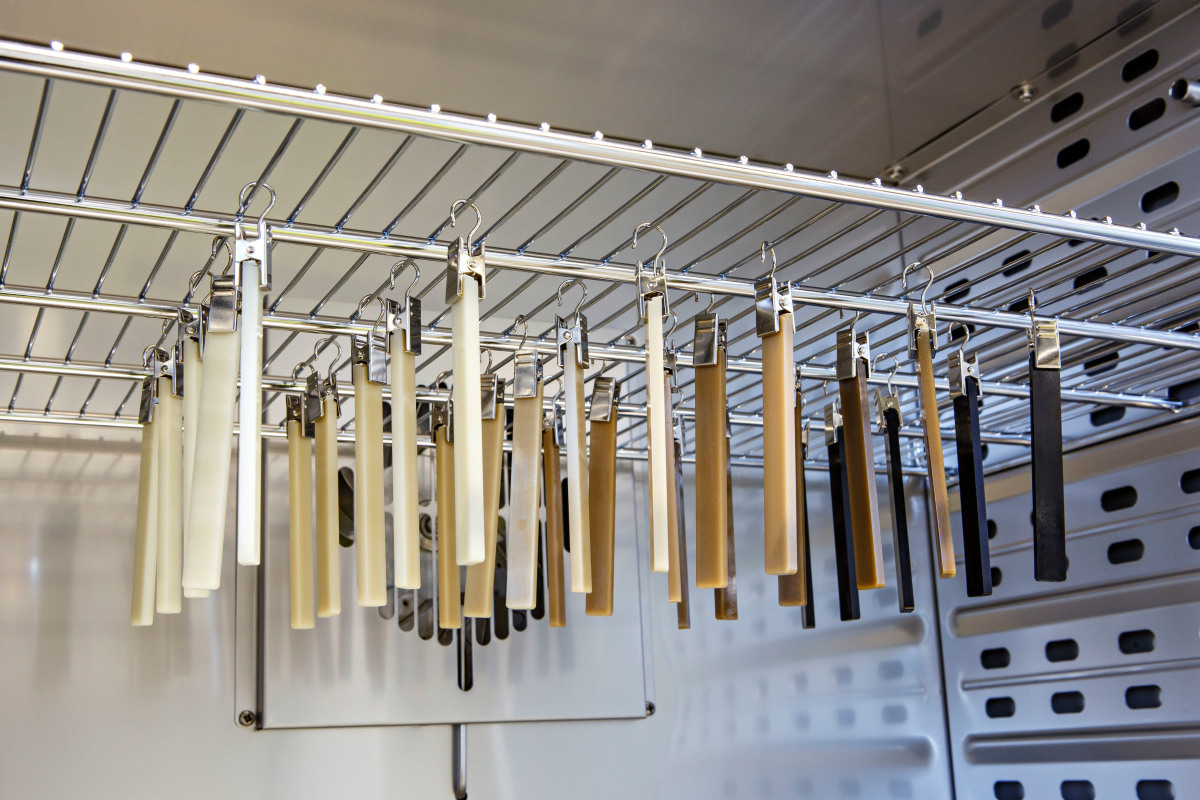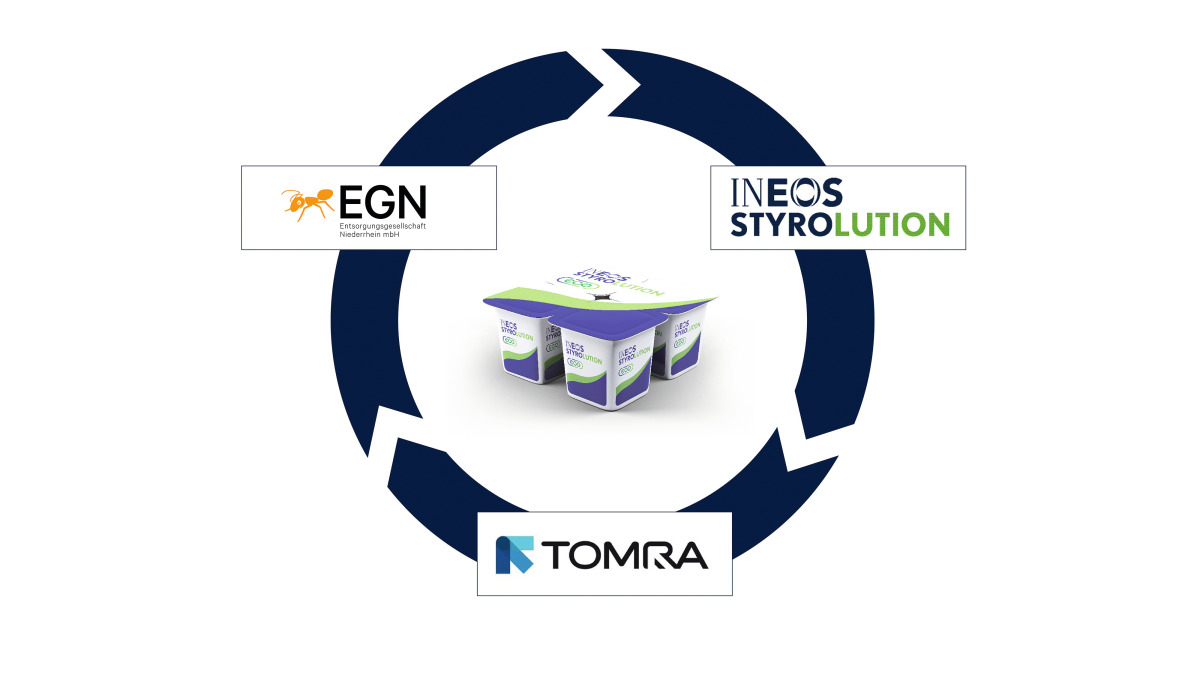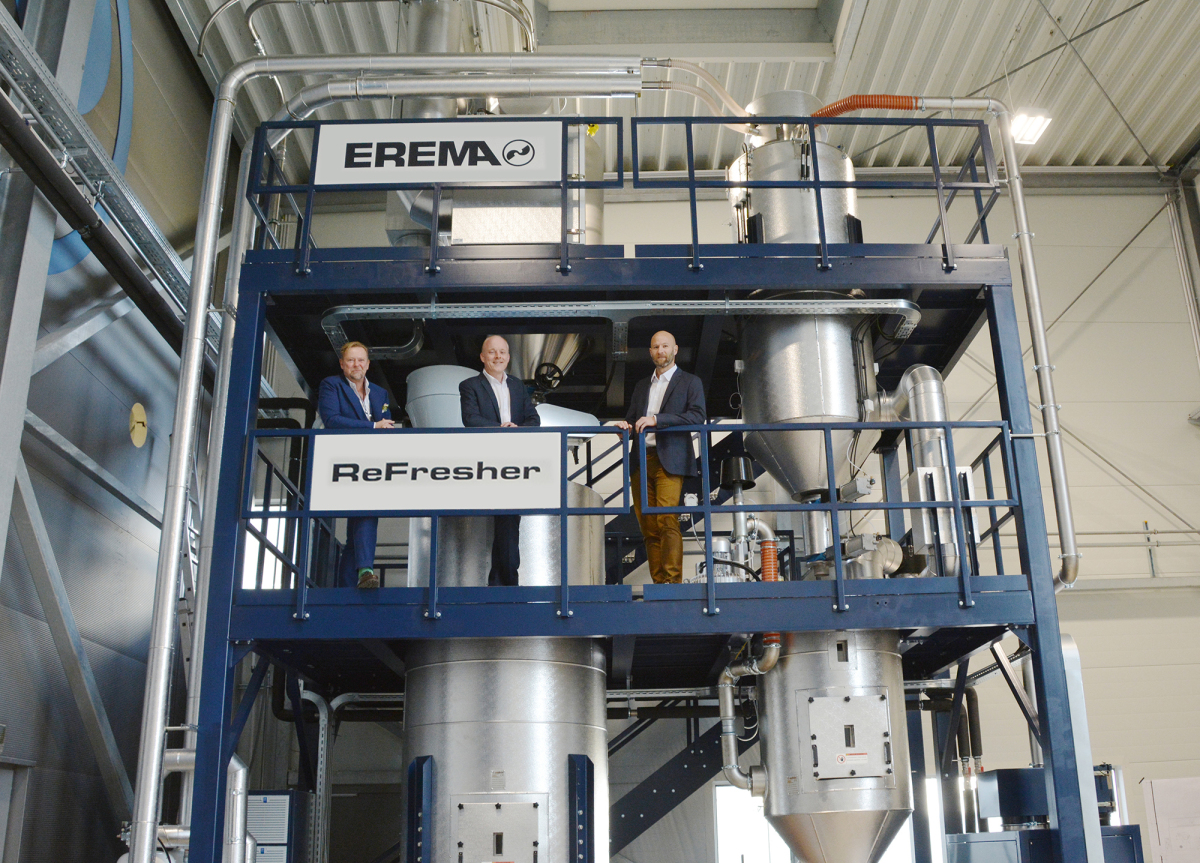More recyclates in technically demanding applications
10.02.2023The plastics industry is expected to come up with viable and practically implementable solutions that will significantly increase the share of recyclates, even in technically demanding applications.
The main drivers are legal requirements at national (Closed Substance Cycle Waste Management Act (KrWG, including its amendments) and European level (Circular Economy Action Plan and initiatives and regulations derived from it) and legal initiatives expected in the future (e.g. the EU Single Use Plastic (SUP) Directive 2019/904). The key requirement here is the mandatory use of post-consumer recyclates in the highest possible share.
 The ageing properties of post-consumer recyclates (PCR) are assessed early in the development phase as part of the new collaborative project
The ageing properties of post-consumer recyclates (PCR) are assessed early in the development phase as part of the new collaborative project
© Fraunhofer LBF, Raapke
While post-industrial recyclates (PIR) still have a very defined composition, the variety of possible compositions (e.g. extraneous polymers, non-plastic components, additives, adhesives, etc.) and aging conditions of post-consumer recyclates (PCR) is very high and, not least, varies (strongly) regionally and seasonally. However, such variations in/of (?) input qualities inevitably have an impact on product properties. For example, the processing and mechanical properties generally deteriorate as the proportion of PCR in the compound or the resulting product increases. The aging resistance and thus the service life of a compound is also largely determined by its composition. The condition of the material stream used, as well as the sorting, separation and processing technologies employed, decisively determine the quality of the resulting recyclate. The compounder also has various options for further optimizing the quality and properties through different measures. For example, through targeted (re-)additivation (e.g. in the case of condensation polymers such as PBT, PA, etc. through stabilizers, compatibilizers or chain extenders) or through the proportionate use of virgin material.
Already the identification and evaluation of suitable extrudable secondary materials (e.g. sorted and purified flakes or regrind or re-granulate) is associated with high effort. The downstream steps (e.g. characterization or quality control, homogenization, etc.) are also elaborate and often linked to the securing of large batches. The complexity is further increased by the variables in compounding (formulation, process). Whether the target properties (especially mechanical properties, aging resistance) are achieved as a result and whether these are also reliably controlled via other variables (such as batch-to-batch variability of the input material streams) often only becomes apparent late in the development or optimization cycle. In many cases, this is done by the trial-and-error-method.
Interdependencies between packaging, composition, compounding and application properties
The joint project aims to develop and communicate extensive knowledge on the dependencies between the form of compounding (e.g. flakes, regrind, granules), the chemical composition of the input materials, influencing variables during compounding (e.g. proportion and state of recyclate, re-additives) and the resulting application properties, especially with regard to mechanical behavior and aging resistance. This is done using the example of selected condensation polymers used in technical applications, such as polyamides (PA), polyethylene terephthalate (PET), polybutylene terephthalate (PBT) or polycarbonate (PC).
The project is also intended to serve as an interdisciplinary platform of players from the entire value chain in order to develop targeted approaches to solutions for the technical problems arising around the topic of the circular economy for technical plastics.
Focus & Approach
In the project, basic information on available (extrudable post-industrial or post-consumer) recyclates (e.g. granules, flakes, regrind, etc.) for the selected target polymers (polyamides, polyesters) will first be collected and evaluated. This includes information on availability, quality descriptions of the recyclates and sources of supply (if available). Furthermore, the main measures described in the state of the art and science (open and patent literature) for quality improvement at the compounding level (e.g. compatibilization, chain extenders, re-stabilization, etc.) are summarized by way of example for selected recyclates. The first project phase is rounded off by an overview of relevant and currently available additives or additive packages for optimizing the mechanical properties and aging behavior in engineering plastics based on recyclates. The main influencing factors from the state of the art with regard to the dependencies of the mechanical properties and the aging behavior on the input characteristics of the recyclates are compiled and evaluated. Material and condition-specific factors are systematically considered, such as the type of polymer (polyamides, polyesters, polycarbonates), the quality of the recyclate used (if reported: type and quantity of impurities) and, if applicable, its aging condition. On the other hand, the currently known information on modes of action and mechanisms of aging on recyclates (e.g. hydrolysis, thermo-oxidative degradation, etc.) and their influencing factors will be compiled; finally, the reported correlations to physicochemical parameters (type and amount of contained additives, chain lengths and end groups), the reported models for describing (and, if possible, predicting) the aging behavior will be considered. The focus of this research (e.g., class and type of polymer, (un)reinforced, etc.) will be agreed upon and jointly determined among the participants. Together with the project participants, the influencing factors from the input recyclates on the mechanical properties and aging behavior are weighted.
Taking into account individual requirement profiles, exemplary and representative formulations are produced at Fraunhofer LBF using selected recyclates and defined additives. The recyclates used are first characterized in detail regarding the molecular parameters relevant for processing and application properties. The focus is on the chemical composition (in terms of polymer content and impurities), the additives and the molecular weight distribution. Rheological properties of the compounds produced are determined and their mechanical behavior (tensile-elongation tests, Charpy notched impact strength if necessary) is evaluated. Furnance aging (tensile-elongation behavior at a defined temperature as a function of time, at approx. 6 aging times) is carried out to evaluate the aging properties. Within the scope of the project, several compounding and injection molding campaigns (max. total of 60 variations, divided into several campaigns) will be carried out in order to further reduce the multitude of influencing parameters and to be able to understand the underlying dependencies better and better. The detailed planning and selection of the experiments will be done in close coordination with the participants and in consideration of the respective input. After each campaign, selected material analytical investigations are carried out for better understanding of the underlying modes of action and dependencies more closely, also at the molecular level. Various thermal (e.g. TGA, DSC), microscopic (e.g. SEM, IR and Raman microscopy), spectroscopic and chromatographic methods (e.g. NMR, GPC, HPLC) are used here. Based on these findings, structure-property relationships will be derived with the intended goal of better understanding dependencies of mechanical and rheological properties as well as long-term properties (e.g. aging behavior) when using PCR of selected engineering thermoplastics. Furthermore, these findings should serve for an estimation or prediction of similar compositions.


